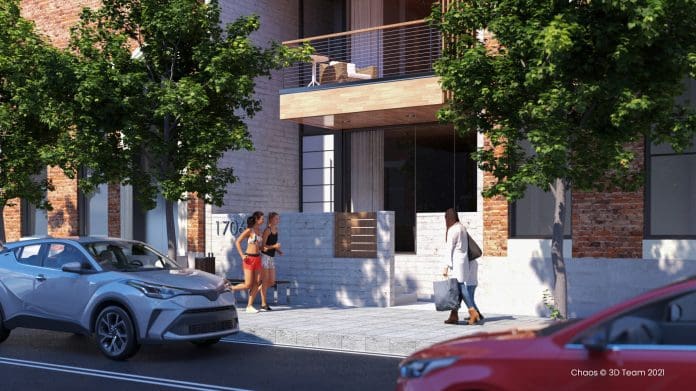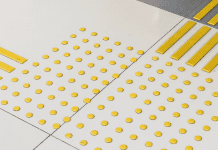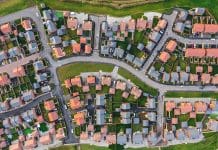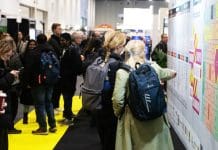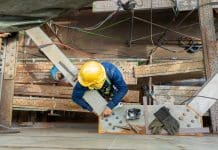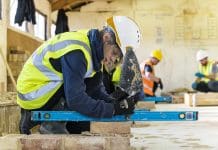One in three of the UK city dwellers believe their home has had a negative effect on their mental wellbeing. Petr Mitev, vice-president of solutions for designers at Chaos, says urban design needs to embrace architectural visualisation and sustainability to build a better future
Over 86% of the UK population live in urbanised areas and while cities offer many lifestyle benefits, they can also be chaotic places to live. At a time when the prevalence of mental health disorders in on the rise, the impact city living has on mental wellbeing is often left out of the conversation.
Cities are associated with higher rates of most mental health problems compared with rural areas 40% higher risk of depression and over 20% more anxiety, which is why urban designs need to be reconsidered with this in mind.
The priority is ensuring people have regular exposure to nature during their daily routines and that housing is well weatherproofed and soundproofed.
In the face of a cost-of-living crisis, getting the buy-in for new city designs can be difficult.
It requires holistic designs and architectural visualisations to bring progressive designs to life, which includes visualising natural light, alleviating isolation and access to outdoor spaces.
Cities are hostile to those living in them
For many, cities are an environmental cocktail of packed streets, cramped housing and lengthy commutes, meaning that mental health issues have become interwoven with city living.
This said, mental health often remains an afterthought when considering guidelines for the healthy city.
This is a disappointing fact, as cities affect our mental health, and mental health problems exert huge impacts on cities, creating a vicious cycle. A recent report we commissioned at Chaos sheds light on this – finding that one in three of UK city dwellers believe their home has had a negative effect on their mental wellbeing.
The main reasons for this include noise (21%), a lack of access to outside spaces (18%) and light pollution (17%).
The Chaos Architects of Change report reveals that with powerful economic and environmental forces coming to bear, cities can be hostile to those living in them.
These facts, accentuated by economic pressures and the rapidly changing climate, highlight the need for change in order to improve how our urban environments will serve their communities in the future.
Alongside these daily pressures, city dwellers now also face rapid climate change, which places unique demands on urban living. City dwellers report that the homes of the future will need to be better insulated (38%), feature low-carbon heating solutions (35%) and include more efficient lighting solutions (34%).
Building for the future
UK mental health charity Mind speaks of the correlation between housing and mental health. Mind reports that living in insecure or overcrowded conditions can increase stress and anxiety.
Not only this but the impact that living in a noisy or uncomfortable environment can have on sleep could lead to mental health problems or make existing problems harder to deal with.
That said, the reality is that the population and costs are going to keep growing, all while the living spaces inevitably get smaller.
This means that when considering building for the future, we need to make smaller spaces more comfortable to live in and consider sustainable building.
Green building practices, such as solar panels, efficient water management and utilising green roofs or walls can enhance overall air quality and create more resilient construction.
Architects of change
If we were to fast-forward 10 years, our cities will look very different, and today’s architectural visualisation offers us a glimpse of this.
The technology allows us to consider alternatives and visualise innovative and unique ways of living, including micro homes, sleeping hubs and a greener way of living.
Architectural visualisation allows architects and designers to envision their cities of the future in 3D, merging architectural flair with the technical know-how.
The technology enables entourage such as trees, vehicles and people to be inserted into designs at every stage of the process, helping to create a sense of scale and help make decisions.
This technology has become indispensable to the industry – it enhances decision-making, cost savings and increases client satisfaction. It also helps to identify design flaws or improvement areas prior to the construction phase, which can reduce the costly revisions later on.
At a time when the mental health of UK city dwellers is being impacted so greatly by the urban environments they reside in, architectural visualisation enables architects to visualise natural light, comfortable shared living spaces and the access to outdoor environments.
There is no doubt that cities will remain the economic and cultural hubs of the UK, the desire to live within them will always ring true given the opportunities they open to the public.
However, the future of cities hinges on our ability to integrate architecture that benefits those that dwell within them. By reimagining the future of cities and housing infrastructure, cities can be built that nurture mental wellbeing and allow its inhabitants to thrive amidst the hustle and bustle of urban life.
Petr Mitev
Vice-president of solutions for designers
Chaos


